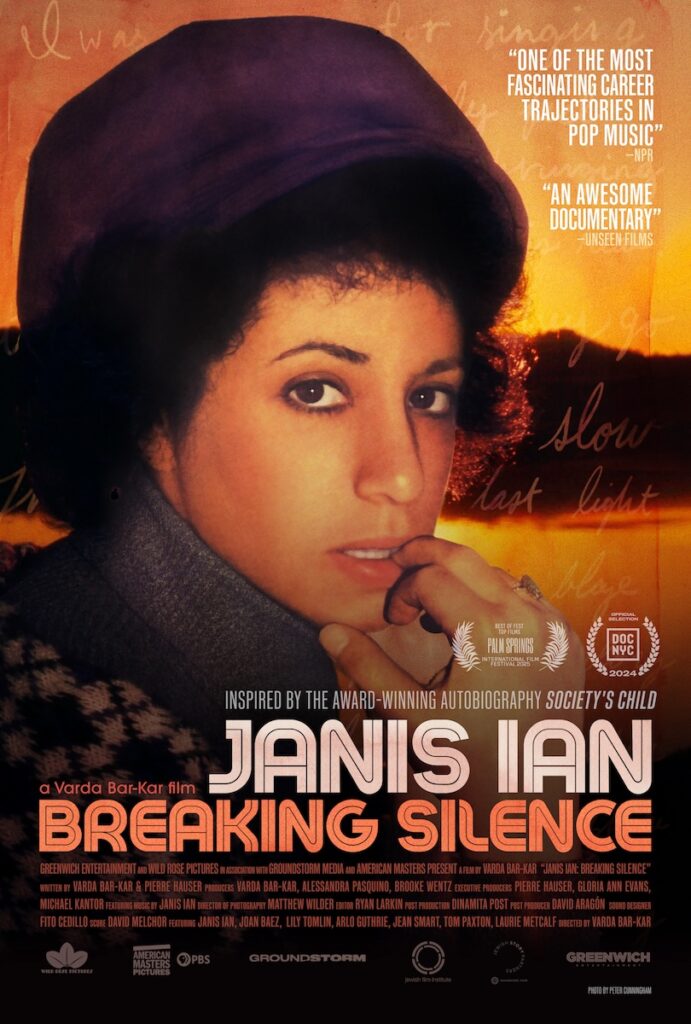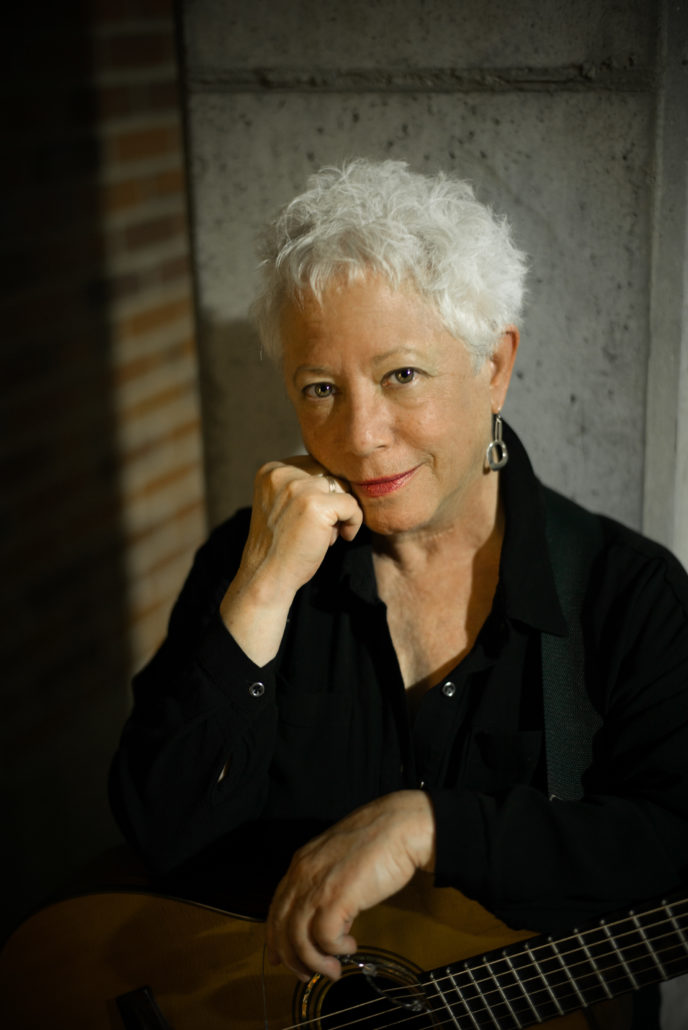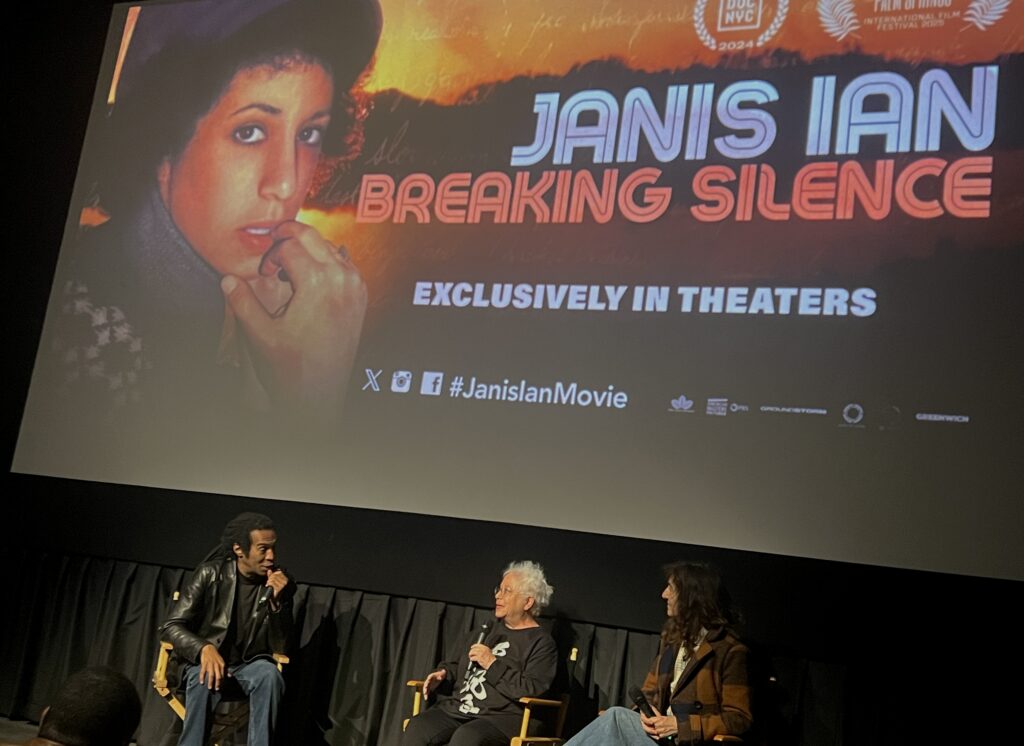 Janis Ian was sitting on a city bus observing a happy young couple—the boy was Black, the girl white—holding hands and minding their own business. She noticed that everyone else on the bus was also watching the two teens, albeit with disapproval in their eyes. The incident, which took place in the early 1960s, provided Ian with the kernel of a song idea. When she got home, she began sketching out the basic storyline of what would ultimately become her controversial first hit, “Society’s Child (Baby I’ve Been Thinking).”
Janis Ian was sitting on a city bus observing a happy young couple—the boy was Black, the girl white—holding hands and minding their own business. She noticed that everyone else on the bus was also watching the two teens, albeit with disapproval in their eyes. The incident, which took place in the early 1960s, provided Ian with the kernel of a song idea. When she got home, she began sketching out the basic storyline of what would ultimately become her controversial first hit, “Society’s Child (Baby I’ve Been Thinking).”
Ian was 13 years old.
That recollection is one of many recounted in the documentary Janis Ian: Breaking Silence. Premiering in theaters on March 28, 2025, and coming to PBS on June 20, the film was directed by the London-born, Santa Monica-based Varda Bar-Kar. Over the course of nearly two hours, Bar-Kar, via archival footage and contemporary interviews with Ian and various associates (Joan Baez, Arlo Guthrie, Lily Tomlin, etc.), creates a portrait of a fearless, resilient artist, now retired from singing due to a condition called vocal fold scarring.
From that debut single—which Ian (born Janis Fink, on April 7, 1951) completed at 14 and recorded for Verve Forecast Records at 15 (after being turned down by 22 other labels)—the promising young artist went on to write and record such classics of the singer-songwriter genre as “Stars,” “Jesse” (covered by Roberta Flack) and, most notably, “At Seventeen.” The latter, a #3 hit in 1975, won Ian a Grammy for Best Pop Female Vocal and has since been enshrined in the Grammy Hall of Fame. The road to that success, and following it, has never been an easy one for her.

Janis Ian (Photo via her publicist)
Breaking Silence spends a significant chunk of time during the film’s first quarter unfolding the saga of “Society’s Child.” It begins with Ian’s appearance on a television special hosted by the brilliant conductor and composer Leonard Bernstein, who championed the teen’s song of interracial romance and her innate talent as singer, musician and composer. A product of the so-called folk boom of the early ’60s, Ian had grown up in rural New Jersey in a musical household and demonstrated an obsession with music from childhood. After her family moved to New York City, the girl was determined to pursue a career as a singer/songwriter. Described as “a poet, an actor” by arranger/composer/musician Artie Butler, she teamed up with record producer George “Shadow” Morton, whose previous success had come primarily from his work with the Shangri-Las, the girl group of “Leader of the Pack” fame. Although an unlikely choice on paper, Morton helped shepherd the song to fruition, matching Ian with simpatico musicians and coaxing a flawless performance from his young charge. She was soon on her way.
Even getting to that point was difficult, however. Warned that radio would never play a song about a Black and white couple, it was suggested by record executives that “Society’s Child” would find greater acceptance if only Ian would agree to replace the word “Black” with something less contentious. She refused, the song was released as is and, despite being banned by many stations, peaked at #14 nationally anyway.
That alone didn’t mean she’d have it easy. At one concert, Ian was faced with a hostile crowd, some of whom repeatedly shouted the derisive, divisive phrase “n—– lover” at her. Shaken to the core, Ian left the stage mid-song. But she then returned and finished the performance, this time rallying support from those in the audience who were not racists.
Watch the trailer for Janis Ian: Breaking Silence
This, and many other scenes, is recreated deftly in the film using actors, but it’s the actual vintage footage of Ian at work, on television, onstage, that offers irrefutable proof that she was, and remained throughout her career, a gifted artist intent on moving forward and never compromising. There would be many more ups and downs, for sure: Outed relatively early in her career as a bisexual by a New York newspaper—at a time when such a revelation could prove fatal to a career—Ian dealt with it and soldiered on. There would be drugs and psychiatric issues, and a marriage to a man who turned abusive. There would be commercial slumps, the most pronounced occurring in the immediate aftermath of “Society’s Child.” It would be another eight years, and a switch to a new label, Columbia, before Janis Ian would taste success again.
But did she ever. Working with producer Brooks Arthur, whose belief in her was unflagging, Ian recorded the album Between the Lines. Released in July 1975, it contained a heartfelt anthem titled “At Seventeen” that took a deep, vivid look at the lives of young women—those whose beauty and popularity signaled bright futures and “ugly girls like me”: “I learned the truth at seventeen, that love was meant for beauty queens,” it began, each line spelling out the hypocrisies and dichotomies at play within the world of high school—ironic, perhaps because Ian herself had never finished her own schooling.
When male program directors failed to give the song airplay, Ian’s label came up with the ingenious idea of sending promo copies to their wives. Before long, “At Seventeen” was a top 5 single, while the album it came from reached #1.
There would be other slumps, despite the newfound success. Performing in Los Angeles one evening, Ian had a bad night, outshone by her opening act, an up-and-comer named Billy Joel. There would be problems with the IRS, too. But by the late ’80s, having relocated to Nashville, Ian rededicated herself to her craft and fell into a new groove, settling into the role of the seasoned veteran and creating some of the finest music of her career.
Related: A documentary of Ian’s former labelmate Billy Joel is due
And finding love. In Nashville she met Pat Snyder and began a committed same-sex relationship, coming out publicly as a lesbian in the early ’90s. (They later married.) The 1993 album Breaking Silence, after which this documentary is named, marked the true beginning of Ian’s new role as an LGBTQ icon, and continued her lifelong insistence on openness and her fierce display of courage.

Janis Ian (center), with DJ Greg Caz (left) and director Varda Bar-Kar at the IFC Center, NYC, 3-27-25 (Photo by Jeff Tamarkin, used with permission)
Because its subject is who she is, Janis Ian: Breaking Silence, the film, plays out as something greater than the standard “and then she recorded…” chronology of events. Ian, throughout, in her interview clips and her work, comes off as an engaging rascal of sorts. You can’t help but like her, and to root for her, while simultaneously marveling at her sheer talent and impenetrable braveness.
And that talent is always there, from the earliest days until the end of her singing career. Her final new studio album, 2022’s The Light at the End of the Line, is in a way a bookend to her self-titled debut, to Between the Lines and the rest. There’s never anything about Janis Ian that doesn’t seem real, and that, perhaps more than anything else, is what permeates this triumphant film.
Watch Ian perform her song “Resist” from her final studio album, The Light at the End of the Line
At New York’s IFC Center theater, where a screening of the film took place the night before its wider opening, Ian participated in a Q&A session at its conclusion. Flanked by director Bar-Kar and DJ Greg Caz posing the questions, Ian spoke about her motivations and goals. Artists, she said, were always “searching for the way home.” She may not perform ever again, and this documentary (as well as her 2008 autobiography, naturally titled Society’s Child) will have to stand as the definitive telling of her story, her arrival home. Janis Ian can retire with the knowledge that she not only made great music but changed lives.
Watch Ian perform “Society’s Child” for Leonard Bernstein in 1966
Ian’s recordings are available here.






2 Comments so far
Jump into a conversationLike all great artists of the 70s, Janis had a worthy disco song, “Fly Too High” from the movie ‘Foxes’.
The Columbia LP release is almost identical to the Casablanca soundtrack version, with just the slightest variation. Blink and you’ll miss it.
I love when Janis smiles.
‘Between the Lines’ gets all the love, but the follow-up ‘Aftertones’ was pretty cool. “This Must Be Wrong” is great. Reminds me of Dean Friedman’s hilarious ‘S&M’.
Janis Ian is an amazing songwriter and performer. Between the Lines is one of the best albums of all time. I own every one of her albums.